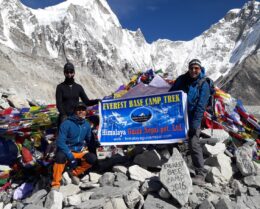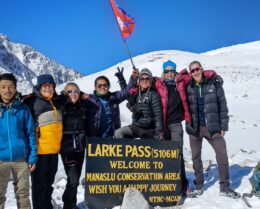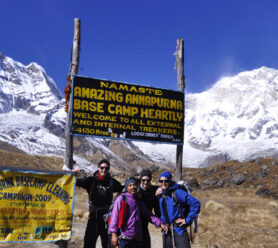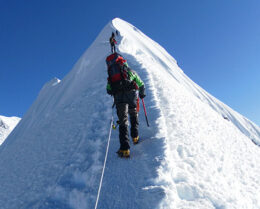Kanchenjunga Base Camp Trek- Guide to Trekking
UPDATED ON 14 December, 2023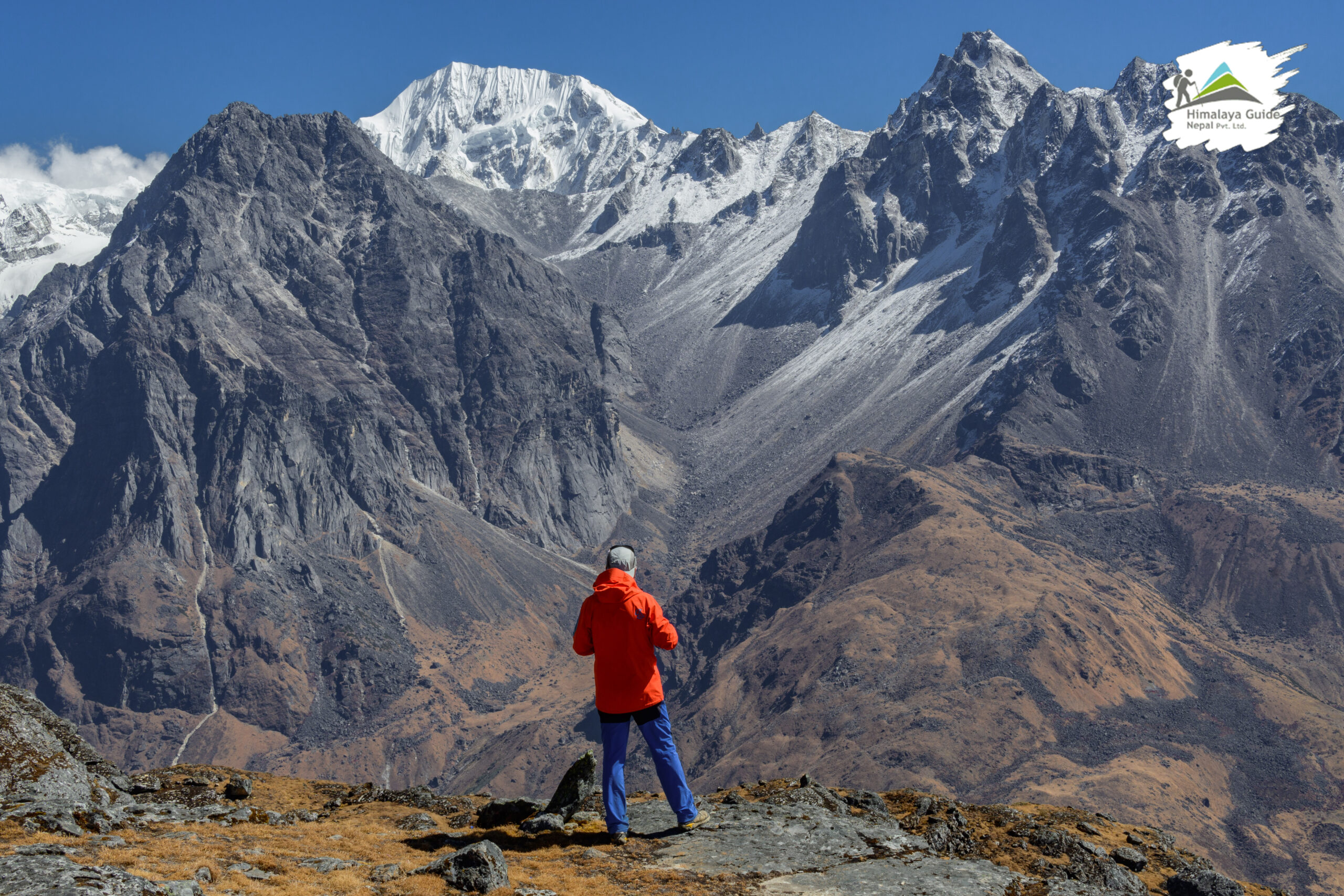
The Kanchenjunga Base Camp Trek in Nepal is an exciting adventure that appeals to hikers with its thrilling and refreshing experiences. Moreover, nestled in the eastern Himalayas, this trek is a hidden gem, offering trekkers an unparalleled experience of nature’s grandeur and cultural richness.
Additionally, with its diverse flora and fauna, remote villages, and breathtaking mountain vistas, the Kanchenjunga region is a paradise for nature enthusiasts and adventure seekers alike. Furthermore, this trek provides a once-in-a-lifetime opportunity to immerse yourself in the raw beauty of the Himalayas and the warm hospitality of the local communities.
This mountain is tall, reaching a height of 8,586 meters above the sea. Moreover, the journey to the base camp of the world’s third-highest mountain promises unforgettable encounters with local cultures and awe-inspiring views that will leave you in awe.
This comprehensive guide is designed to equip you with all the information you need to embark on this remarkable trek. So lace up your hiking boots and let’s delve into the enchanting world of the Kanchenjunga Base Camp Trek.
In this comprehensive guide, we present essential information about the Kanchenjunga Base Camp Trek, including details about the trekking route, itinerary, prominent attractions, and other vital considerations. By delving into this guide, trekkers can effectively plan their journey and maximize their enjoyment of this awe-inspiring adventure.
If You want to visit this Trek, make a reservation right now.: Book Now
Best Time to Visit Kanchenjunga Base Camp Trek
The best time to embark on the Kanchenjunga Base Camp Trek is from March to May and September to November. These periods offer the most favorable weather conditions for trekking in the Kanchenjunga region. With its breathtaking mountain views, challenging trails, and scenic beauty, this adventure is a must for those seeking an unforgettable experience in the Himalayas of Nepal.
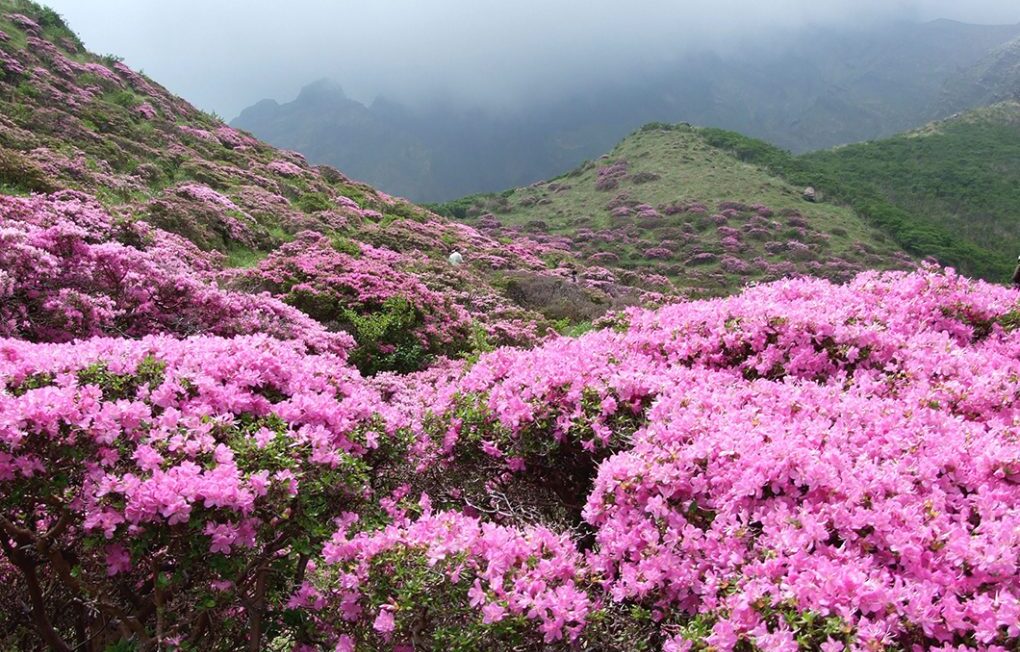
During the spring months of March to May, the Kanchenjunga region comes alive with vibrant rhododendron forests in full bloom. The picturesque landscapes and moderate temperatures make it an ideal time for trekking enthusiasts. As you ascend to higher altitudes, the majestic peaks of Kanchenjunga and its neighboring mountains will leave you in awe.
The autumn months of September to November are equally captivating, with clear skies and stunning views of the snow-capped Himalayan peaks. The weather during this time is stable, providing excellent visibility and breathtaking panoramas. Trekking through the Kanchenjunga region during these months allows you to witness the natural beauty of the area at its best.
It is important to note that the monsoon season (June to August) and winter months (December to February) are not recommended for the Kanchenjunga Base Camp Trek. The heavy rainfall during the monsoon can make the trails slippery and challenging, while the winter months bring extreme cold and snowfall, making it difficult to trek in the higher altitudes. For your safety and comfort, it is advisable to avoid these seasons.
Why Choose Us for Your Kanchenjunga Base Camp Trek
When it comes to embarking on the Kanchenjunga Base Camp Trek, choosing us as your trekking partner ensures a seamless and unforgettable adventure. With our years of experience in organizing treks in the region, we have established ourselves as a trusted and reliable trekking agency.
Our team comprises experienced guides and porters who are well-versed in the challenges and requirements of trekking in the Kanchenjunga region. They possess extensive knowledge of the local culture, flora, and fauna, enriching your trekking experience with valuable insights and stories along the way. Our guides are trained to handle altitude-related challenges and are equipped with first aid and emergency response skills, ensuring your safety throughout the journey.
We prioritize the safety and comfort of our trekkers. Our carefully designed itineraries allow for proper acclimatization, ensuring that you have enough time to adjust to the altitude and minimize the risks associated with high altitudes. We provide high-quality trekking equipment and adhere to strict safety protocols, ensuring that you are well-prepared and protected during the trek.
Furthermore, we believe in responsible and sustainable tourism. We promote eco-friendly practices during our treks, such as proper waste management and supporting local communities. By choosing us, you contribute to the preservation of the pristine beauty of the Kanchenjunga region and support the livelihoods of the local people.
Embark on a memorable journey to the Kanchenjunga Base Camp with us and let our expertise and passion for adventure make your trek a truly remarkable experience in the Himalayas of Nepal.
Flight from Kathmandu to Bhadrapur: The Beginning Point of Kanchenjunga Base Camp Trek
Begin your epic journey to the Kanchenjunga Base Camp by taking a scenic flight from Kathmandu to Bhadrapur. Moreover, the flight offers mesmerizing views of the Himalayan peaks and lush landscapes below.
Additionally, from Bhadrapur, your trekking adventure commences, leading you through picturesque villages, dense forests, and breathtaking terrains as you gradually approach the majestic Kanchenjunga.
Kanchenjunga Conservation Area: An Introduction
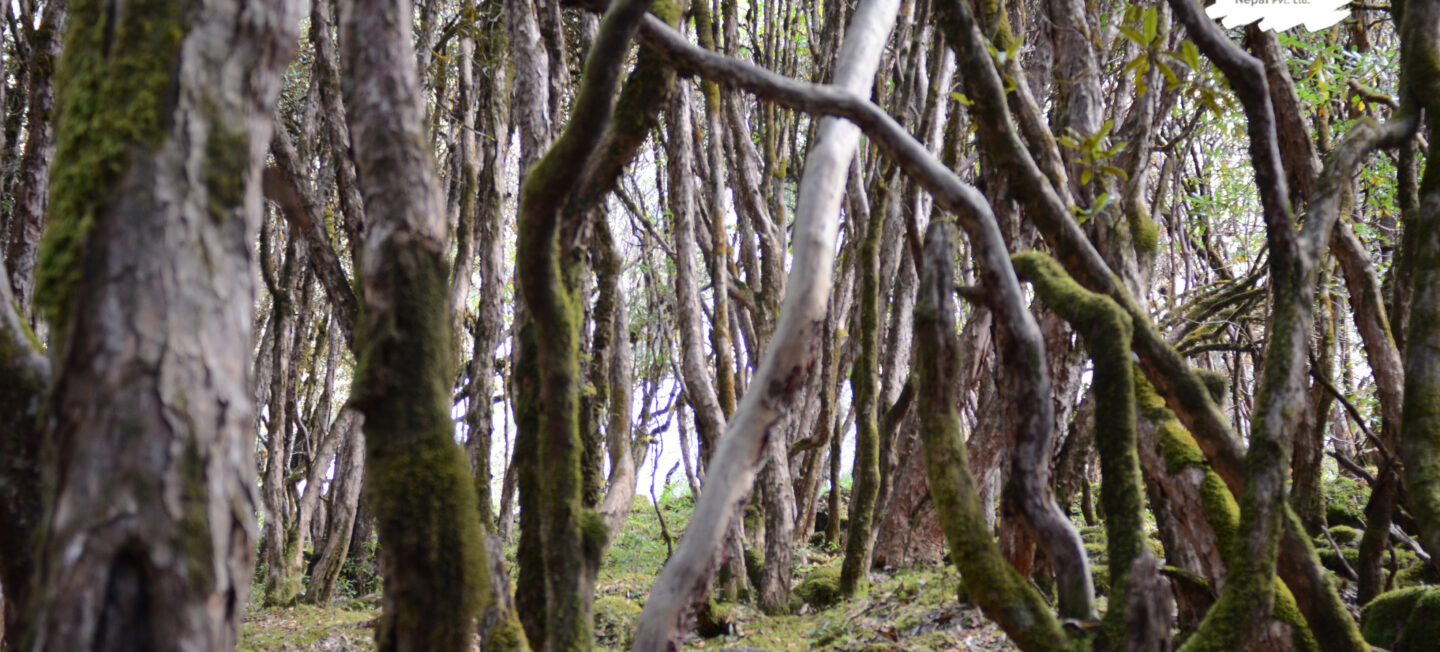
The Kanchenjunga Conservation Area spreads over a vast 2,035 square kilometers, a pristine sanctuary in the lap of the Himalayas. Furthermore, it is a protected region brimming with biodiversity and natural wonders. It is a major highlight of the trek.
Moreover, spanning vast landscapes, this sanctuary is home to rare flora and fauna, including the elusive snow leopard and red panda. Additionally, as you embark on the Kanchenjunga Base Camp Trek, the conservation area will captivate you with its untouched beauty and ecological significance
Trekking Route: A Brief Overview
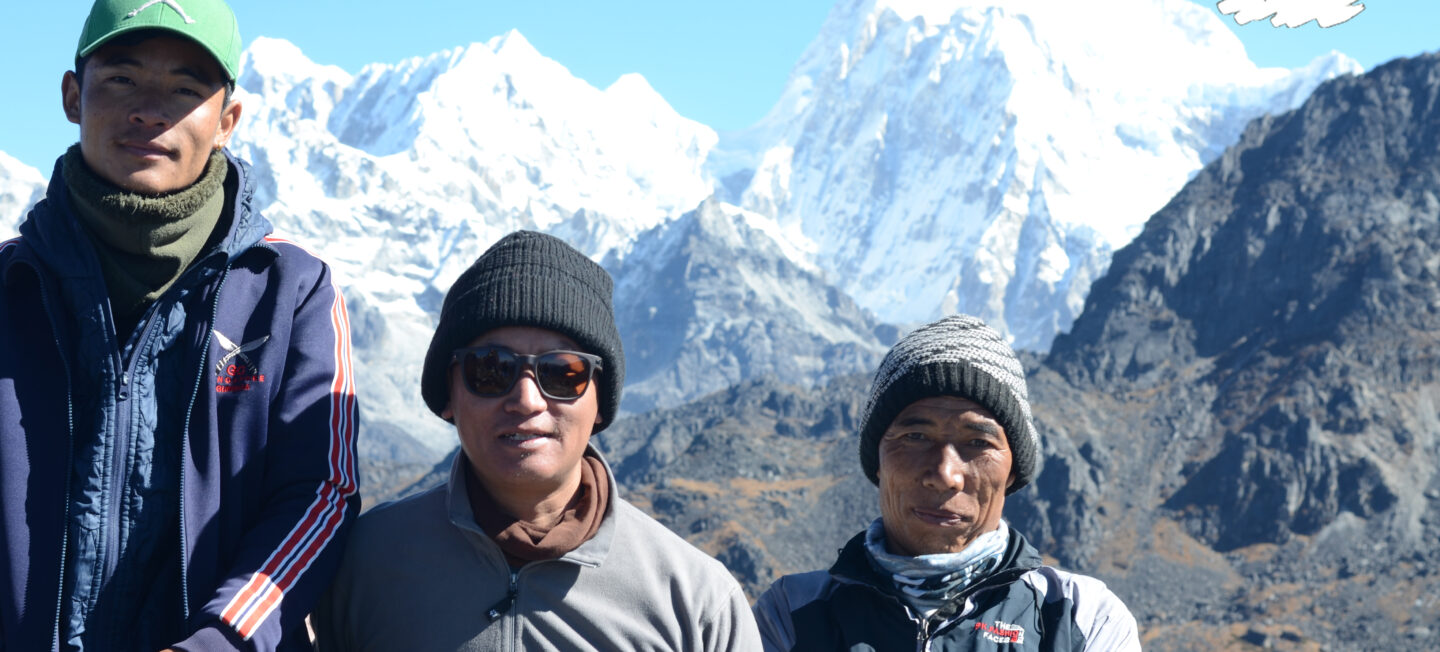
The Kanchenjunga Base Camp Trek offers a thrilling and diverse route that takes trekkers on an unforgettable expedition. Moreover, beginning in the lush lowlands, the trail winds through charming villages, dense rhododendron forests, and remote terrains.
Additionally, as you ascend, the landscapes transition to alpine meadows and glacial moraines, culminating at the base camp with awe-inspiring views of the mighty Kanchenjunga and its surrounding peaks.
Day 1-5: The Trek Begins
The first five days of the Kanchenjunga Base Camp Trek are an exhilarating start to the adventure. You will hike to Chirwa on the first day; it is a little settlement at a height of 1,270 meters. You will hike the next day to Sekathum, which is 1,660 meters above sea level.
Additionally, after arriving in Bhadrapur, trekkers set out for Taplejung, the gateway to the trek. Moreover, passing through charming villages like Chhirwa and Sekathum, you’ll immerse yourself in local culture and stunning landscapes.
Furthermore, crossing bridges over gushing rivers, the trail leads to Amjilosa, where the surrounding forests and tranquil ambiance provide a serene respite.
Day 6-10: Trekking to Kanchenjunga Base Camp
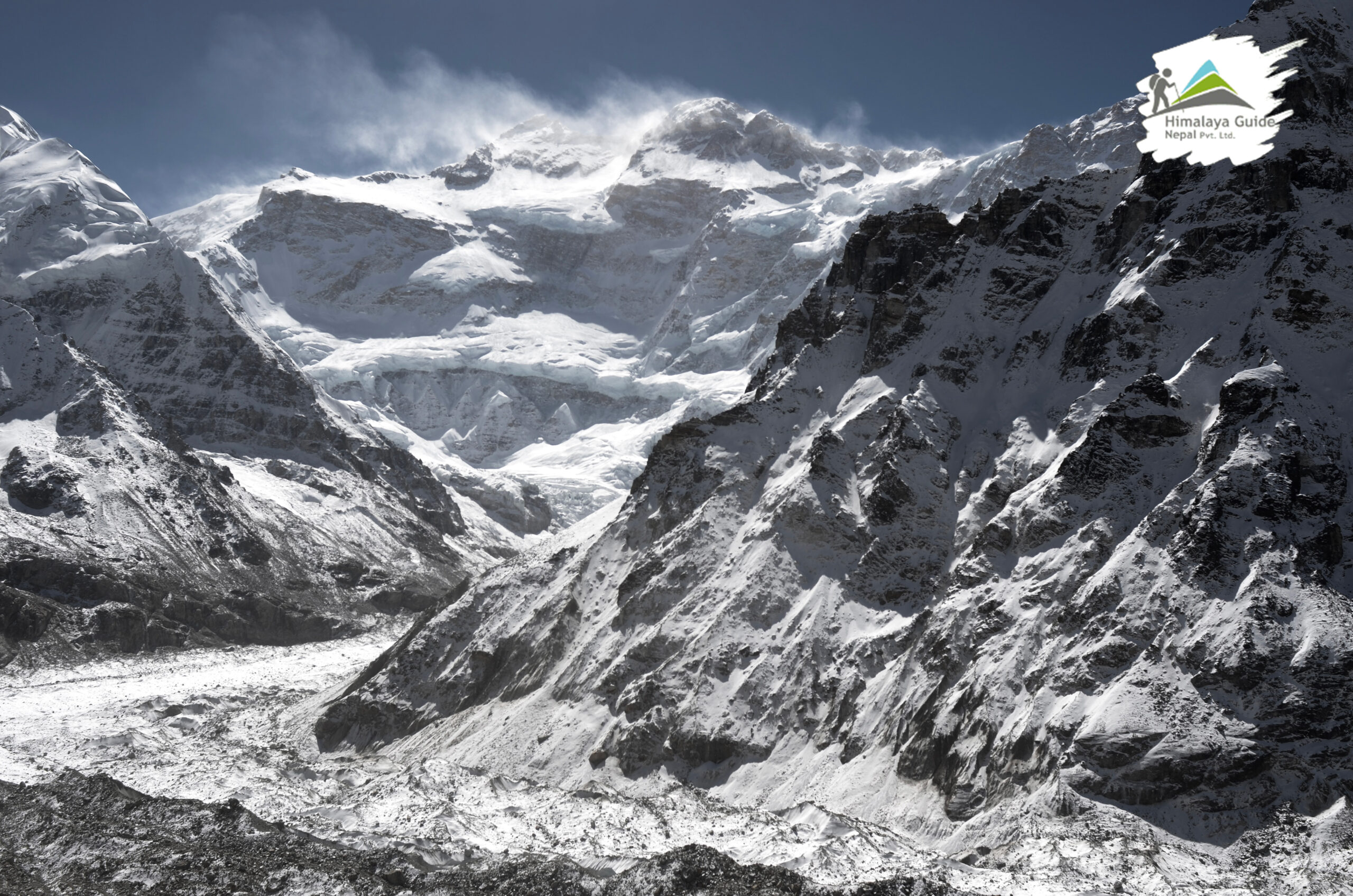
On the sixth day of the expedition, the journey takes trekkers to the picturesque Kambachen, situated at an altitude of 4,050 meters. On the following day, Day 7, an acclimatization day is planned at Kambachen, allowing adventurers to adjust to the high altitude and prepare for the challenges ahead.
Progressing on the eighth day, the trek continues towards Lhonak, a destination perched at an elevation of 4,790 meters, offering breathtaking vistas and unique experiences. Additionally, Day 9 marks an exciting venture to Pangpema, the North Base Camp, where the altitude reaches remarkable heights.
Finally, on Day 10, trekkers retrace their steps and make their way back to Kambachen, concluding a rewarding expedition through these awe-inspiring terrains.
Day 11-17: Trekking to South Base Camp and Sinion La Pass

Embarking on Day 11, the trek leads adventurers to Ghunsa, unfolding new vistas and experiences along the path. Day 12’s journey is characterized by the onward trek to Sele La Pass, where the altitude reaches 4,290 meters, offering a challenging yet awe-inspiring passage through the rugged terrain.
Continuing on Day 13, the trail winds its way to Tseram at an elevation of 3,870 meters, immersing travelers in the natural beauty of the region. Day 14 marks a significant milestone as trekkers make their way to Ramche, the South Base Camp, an endeavor that promises remarkable views and a sense of accomplishment.
Returning to Tseram on Day 15, adventurers have the opportunity to further absorb the serenity of the landscape. The journey escalates on Day 16, as the trek advances towards Sinion La Pass, standing tall at an altitude of 4,610 meters, a momentous achievement for those seeking both adventure and breathtaking panoramas.
Finally, Day 17 culminates in reaching Gunsa, completing a remarkable expedition through a tapestry of natural wonders and unforgettable moments.
Day 18-22: Trekking Back to Taplejung
The return journey from Kanchenjunga Base Camp to Taplejung is a reflective time for trekkers. On day 18 of the trek, we trek to Kyapar at 2,730 meters elevation. Additionally, passing through familiar trails and picturesque landscapes, you’ll cherish the memories of the magnificent Himalayan adventure.
Moreover, each step brings a sense of accomplishment as you bid farewell to the majestic Kanchenjunga, leaving you with a heart full of gratitude and awe for the breathtaking experiences that unfolded during the trek.
Key Attractions of Kanchenjunga Base Camp Trek
Kanchenjunga Glacier:
Witness the awe-inspiring Kanchenjunga Glacier, a massive ice river that cascades down from the world’s third-highest mountain. The glacier’s glimmering surface and colossal presence add to the trek’s enchantment.
Yalung Glaciers:
Encounter the majestic Yalung Glaciers, an intricate network of ice formations that embellish the trekking route. These ethereal ice formations create a mesmerizing backdrop for your adventure.
North and South Base Camps:
Reach the North and South Base Camps of Kanchenjunga, where trekkers bask in the grandeur of the world’s third-highest peak. The camps offer breathtaking views and a sense of triumph like no other.
Sinion La Pass:
Conquer the challenging Sinion La Pass, the highest point of the trek. The pass rewards trekkers with panoramic vistas of the surrounding valleys and the towering Kanchenjunga massif.
Wildlife:
Explore the diverse wildlife of the region, including elusive snow leopards, red pandas, musk deer, and a variety of avian species. The Kanchenjunga Conservation Area harbors rich and rare biodiversity.
Kanchenjunga Conservation Area:
Immerse yourself in the pristine natural beauty of the Kanchenjunga Conservation Area, a protected sanctuary with lush forests, alpine meadows, and unique flora and fauna.
View of Mountain Kanchenjunga:
Capture breathtaking views of the Kanchenjunga massif and its surrounding peaks from various vantage points along the trek. The sights of the world’s third-highest mountain will leave you in awe throughout your journey.
Tips for the Kanchenjunga Base Camp Trek
Train for the trek:
Prepare physically and mentally for the demanding trek. Regular cardiovascular exercises, strength training, and hiking practice will enhance your endurance and make the journey more enjoyable.
Pack wisely:
Pack essential trekking gear, including sturdy footwear, comfortable clothing, a warm sleeping bag, first-aid supplies, and a waterproof backpack. Travel light but ensure you have all necessary items for the journey.
Acclimatize properly:
Take acclimatization seriously to avoid altitude-related illnesses. Include acclimatization days in your itinerary to allow your body to adjust gradually to higher altitudes.
Respect the local culture:
Interact respectfully with the local communities, including the Sherpa people. Embrace their customs, traditions, and way of life, and be mindful of their cultural norms during your stay.
Follow the rules:
Adhere to the guidelines set by the local authorities and conservation area management. Respect the environment, wildlife, and other trekkers to preserve the pristine beauty of the region for generations to come.
What will you come across in this trek?
In the Kanchenjunga Base Camp Trek, you will come across:
- Stunning Landscapes: Breathtaking views of snow-capped peaks, glaciers, alpine meadows, and lush forests await you.
- Remote Villages: Encounter charming and culturally rich Sherpa and Rai villages, offering a glimpse into traditional mountain life.
- Kanchenjunga Glacier: Witness the grandeur of the Kanchenjunga Glacier, a massive ice river that descends from the peak.
- Unique Flora and Fauna: Explore the diverse wildlife, including rare species like snow leopards, red pandas, and various bird species.
- Sacred Monasteries: Discover ancient monasteries and religious sites along the trail, where you can immerse yourself in spiritual experiences.
- High-altitude Passes: Cross challenging passes like Sinion La Pass, offering exhilarating panoramic views of the surrounding mountains.
- Warm Hospitality: Experience the warmth and hospitality of the local Sherpa community, known for its friendliness and cultural traditions.
- Kanchenjunga North and South Base Camps: Reach the base camps and stand in awe of the world’s third-highest mountain.
- Kanchenjunga Conservation Area: Trek through this protected sanctuary, preserving a wealth of biodiversity and natural wonders.
- Adventure and Triumph: Encounter a sense of adventure and accomplishment as you conquer the heights and witness the magnificence of the Himalayas.
FAQs
How long does the Kanchenjunga Base Camp Trek take to complete?
The Kanchenjunga Base Camp Trek typically takes around 19 to 20 days to complete. This duration includes acclimatization days to help trekkers adapt to higher altitudes and ensures a safe and enjoyable journey. It also accounts for travel to and from Kathmandu, the starting point of the trek.
What is the best time to embark on the Kanchenjunga Base Camp Trek?
The best time to undertake the Kanchenjunga Base Camp Trek is during the spring (March to May) and autumn (September to November) seasons. During these months, the weather is generally mild, and the skies are clear, offering unobstructed views of the majestic Himalayan peaks.
Is prior trekking experience necessary for the Kanchenjunga Base Camp Trek?
While prior trekking experience is not mandatory, it is beneficial to have a reasonable level of fitness and some familiarity with trekking. The Kanchenjunga Base Camp Trek is considered challenging due to its remote and rugged terrain, high altitudes, and long duration.
Are permits required for the Kanchenjunga Base Camp Trek?
Yes, trekkers need to obtain permits for the Kanchenjunga Base Camp Trek. Moreover, there are two main permits required: the Kanchenjunga Conservation Area Permit (KCAP) and the Restricted Area Permit (RAP).
Additionally, the KCAP allows access to the Kanchenjunga Conservation Area, a protected sanctuary with unique biodiversity and natural wonders, offering trekkers a chance to experience the pristine beauty of the region while contributing to its preservation.
How challenging is the Kanchenjunga Base Camp Trek?
The Kanchenjunga Base Camp Trek is considered one of the more challenging treks in Nepal due to its remote location, rugged terrain, high altitudes, and lengthy duration. Trekkers should be prepared to walk long distances daily and navigate various terrains, including steep ascents and descents.
Conclusion:
In conclusion, the Kanchenjunga Base Camp Trek presents an extraordinary opportunity for trekkers to immerse themselves in the unparalleled beauty and cultural richness of the Himalayas. Additionally, from the towering peaks and pristine glaciers to the warm hospitality of the local communities, every step of this journey offers a transformative experience.
Moreover, the trek demands dedication, proper preparation, and respect for the environment and local culture. Additionally, however, the rewards are immeasurable – breathtaking vistas encounters with rare wildlife, and a profound sense of accomplishment.
You may also Like:

